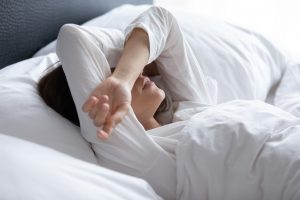
The study published in the European Heart Journal found that women who experienced frequent unconscious wakefulness for long periods had nearly double the risk of death from cardiovascular disease. This association was less apparent in men who had increased death risk by just over a quarter than the general male population.
Researchers came to a conclusion after analyzing data from 8,001 men and women who had worn sleep monitors overnight. All participants were taking part in one of three studies: 2,782 men in the Osteoporotic Fractures in Men Sleep Study (MrOS), 424 women in the Study of Osteoporotic Fractures (SOF), and 2,221 men and 2,574 women in the Sleep Heart Health Study (SHHS).
The average age of participants in the three studies was 77, 83, and 64 years. A follow-up period was conducted, which ranged from 6 to 11 years.
Adjustments were made for factors that may affect the results, such as total sleep duration, age, medical history, body mass index (BMI), and smoking habits.
The author of the study, Prof. Linz, said: “It is unclear why there is a difference between men and women in the associations, but there are some potential explanations. The triggers causing an arousal or the body’s response to arousal may differ in women compared to men. This may explain the relatively higher risk of cardiovascular death in women. Women and men may have different compensatory mechanisms for coping with the detrimental effects of arousal. Women may have a higher arousal threshold, and so this may result in a higher trigger burden in women compared to men.”
What Is Unconscious Wakefulness?
Unconscious wakefulness is also known as cortical sleep arousal. It is a normal part of sleep, but it occurs too frequently or for longer than usual periods in some people. It occurs spontaneously and is part of the body’s ability to respond to potentially dangerous situations, such as noise pollution or breathing becoming obstructed from sleep apnea. Other factors can contribute to the condition, such as pain, limb movements, trauma, temperature, and light.
This helps to outline the importance of healthy sleep patterns, especially in women. During this stressful time, sleep disturbances have been found to be at an all-time high. By following some simple steps to ensure a good night’s sleep, the risk of cardiovascular disease is significantly reduced.
These steps include following a strict bedtime schedule, going to bed and waking at the same time each day, and turning off all computers, cell phones, and tablets an hour before bedtime. By introducing these simple lifestyle changes, a healthy night’s rest may be possible.